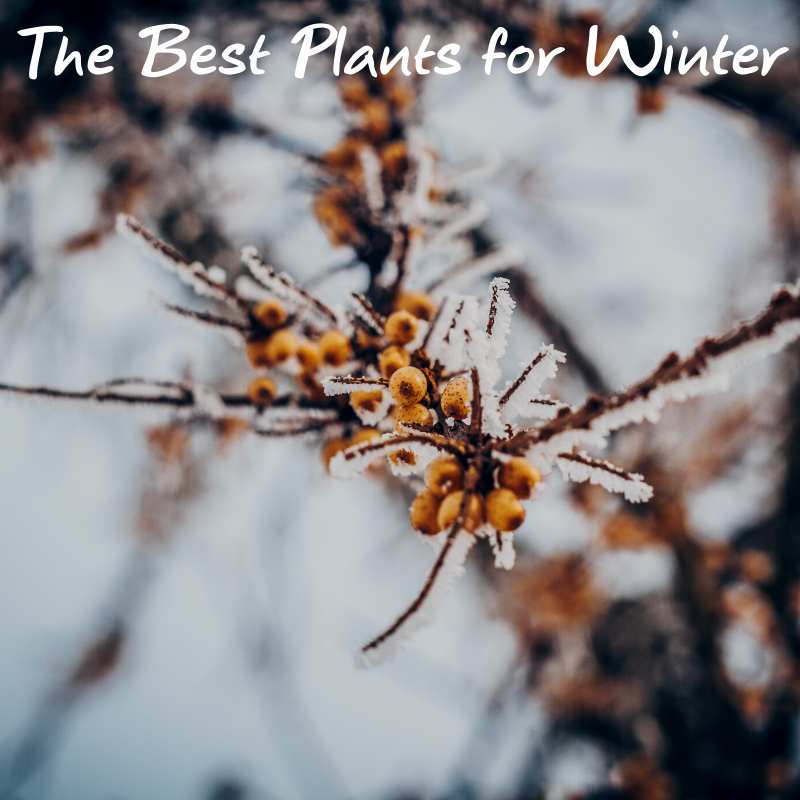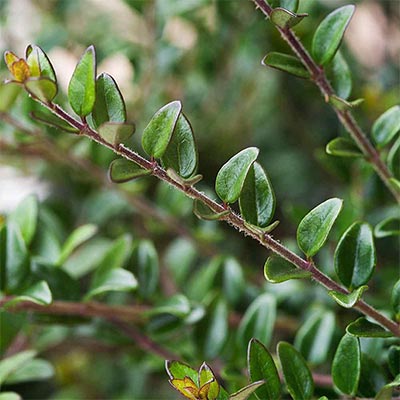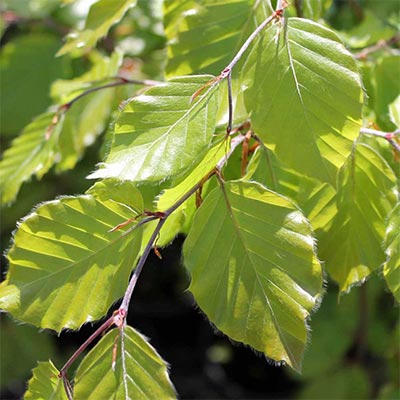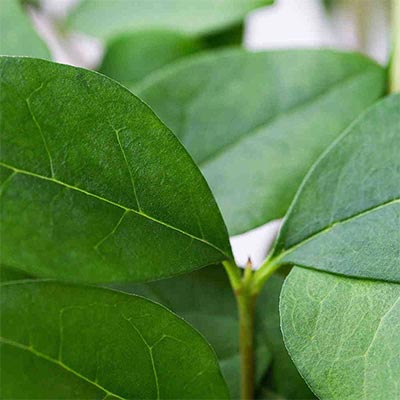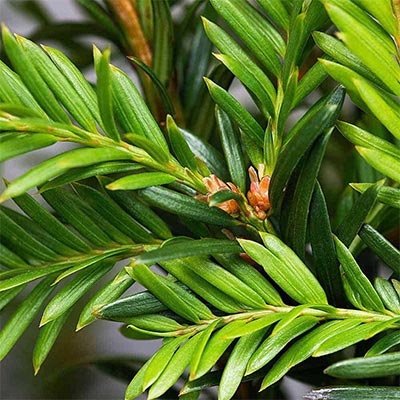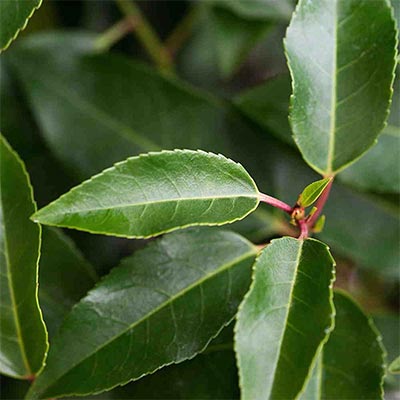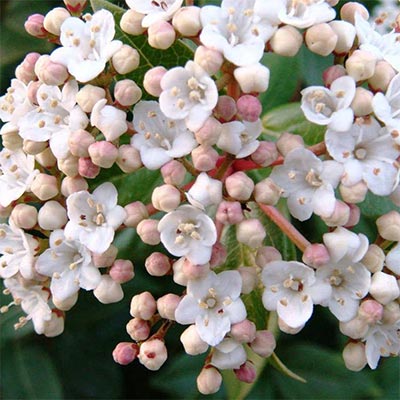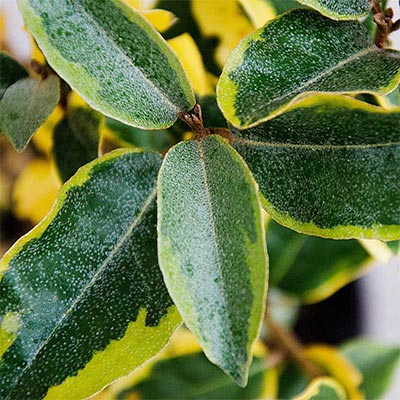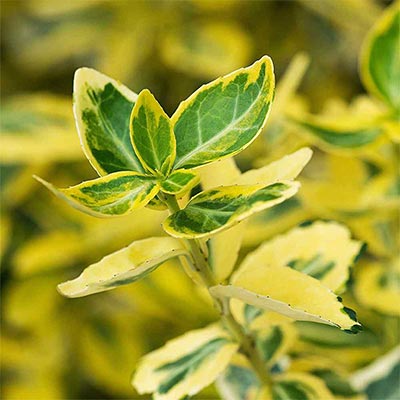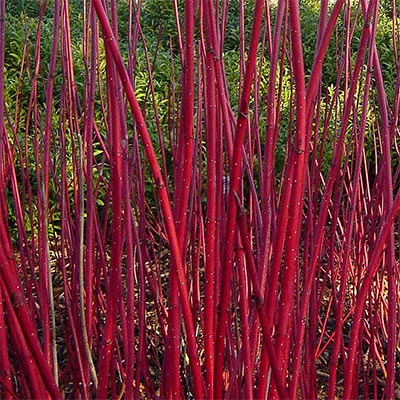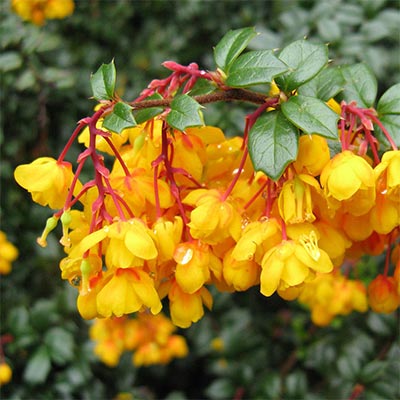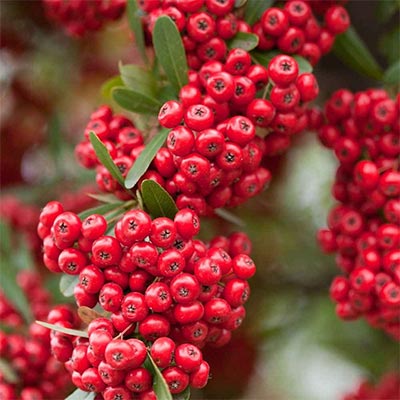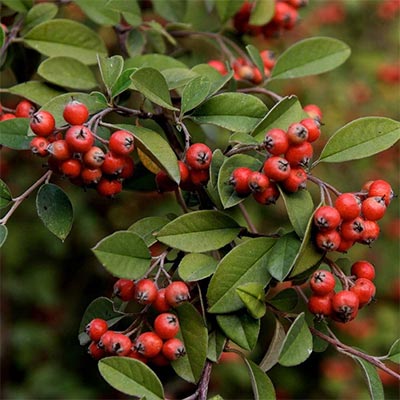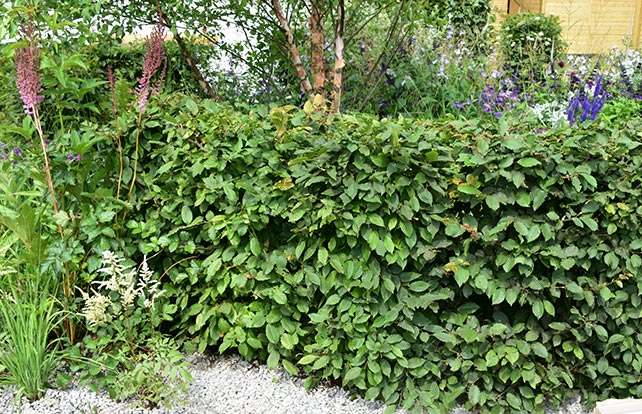1. Evergreen Hedging
Evergreen shrubs for hedges which have been trimmed to a very neat shape look great when dusted with snow or frost. Yew (Taxus baccata) looks particularly stunning for this but other good species for this effect would be Leylandii, Lonicera nitida, Privet, Portuguese Laurel, Box and, although not a full evergreen, Beech is also very good for a strong, structural hedge
Here’s a photograph of a beautiful mature Yew hedge with bright Dogwood sibirica in the foreground – shown off to perfection by the dark background – and even more beautiful when there’s snow on the ground.
2. Colourful Foliage and Flowering Hedges
The Viburnum tinus hedge which is a winter flowering evergreen the tiny pink bud-like flower clusters are changing into blue-black berries as we speak.
Variegated species come into their own adding bright greens, yellows and creams to the winter garden at a time when everything looks rather grey – Oleaster “Gilt Edge” or “Limelight” and Griselinia “Dixon’s Cream” would be good examples of full height species and Euonymus “Emerald and Gold” or “Emerald Queen” for low growing compact hedges.
Dogwoods are at their best – Cornus Alba with its red stems (or the even brighter red stems of Cornus Sibirica) looks great planted in a drift alongside Cornus Stolonifera with its bright yellow stems – Dogwood is particularly good set against a snowy background.
And give a thought to the birds struggling for food by providing a selection of species with berries – Holly, Pyracantha, Cotoneaster franchetii, Berberis are all good examples or you can see our ultimate guide to hedges with berries for even more fruitful options.

Viburnum Tinus 
Oleaster Gilt Edge 
Griselinia 
Euonymus Forunei Emerald ‘n’ Gold 
Dogwood Sibiricia 
Holly 
Berberis 
Pyracantha Red 
Cotoneaster Franchetii
Can you trim hedges in winter?
One of the most popular questions our customer service team is asked is ‘how to prune hedges‘, ‘can hedges be pruned in winter‘, ‘when should hedges be trimmed‘ and so on. When growing a new hedge, ‘formative’ pruning (shaping a tree/hedge whilst it is young) is carried out in it’s first couple years and this should be done in winter or spring. Once you have your established hedge, ‘maintenance’ pruning is carried out usually once a year in the spring and summer months. Depending on if your hedge is formal or informal, formal hedges require a maintenance prune two to three times a year. An informal hedge only needs clipping once a year, again in the spring or summer. The difference between a formal and informal hedge is how tightly the leaves have been clipped. A formal hedge for example could be trimmed to make box border as shown in the image below…
An informal hedge would have a more natural shape and would be clipped less to allow growth. Like this Hornbeam hedge for example…
For more information on pruning and also for pruning techniques, please see the RHS hedge trimming advice page.
